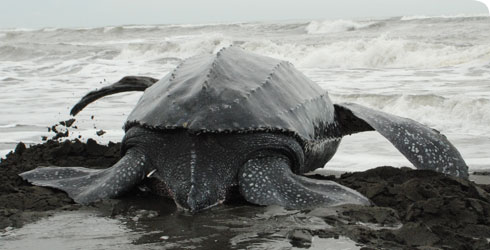Dermochelys coriacea (leatherback sea turtle)
The leatherback sea turtle, Dermochelys coriacea, was first described by Vandelli in 1761. It is the only living member of the Dermochelyidae family and weighs 300–600kg. It rivals the saltwater crocodile as the world’s largest living reptile.
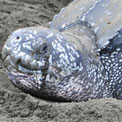
Female Dermochelys coriacea © Katherine Garrett
Listed as critically endangered (International Union for Conservation of Nature 1990), along with many other sea turtles it faces threats from:
- entanglement in fishing gear
- over-harvesting of eggs
- hunters who kill adults for meat and shells
The leatherback is found throughout the world’s oceans feeding on jellyfish and salps. It is also the deepest diver amongst the reptiles, reaching depths of 1,230m.
It nests on beaches in the tropics where it lays 50–70 viable eggs.
Species detail
-

Taxonomy
Dermochelys coriacea is the only member of its family. Discover what makes its shell unique.
-

Distribution
Adult leatherback turtles mate in tropical waters, but migrate thousands of kilometres northwards. Discover how they survive in sub-arctic water temperatures.
-

Biology
Dermochelys coriacea nests on sandy beaches and lays around 60 viable eggs in a single nest chamber, but only half of them hatch. Discover what determines the sex of the offspring.
-

Conservation
The leatherback sea-turtle faces many threats, but efforts are being made to protect them.
-

References
Get reference material for Dermochelys coriacea.
Images
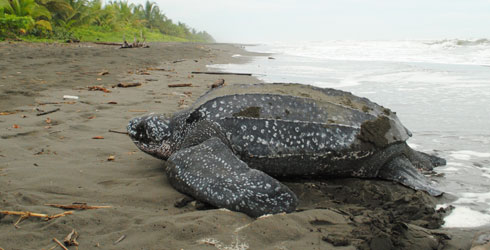
Adult female Dermochelys coriacea. Usually females nest during the night but this individual emerged at 15.00 - an unusual occurrence. Taken in Reserva Pacuare, Costa Rica.
© Katherine Garrett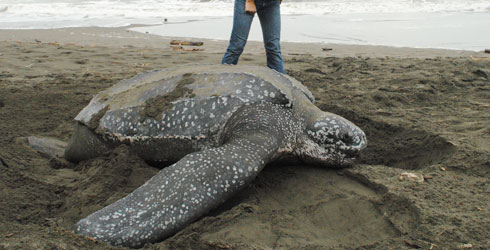
This picture demonstrates the immense size of the adult leatherback turtle.
© Katherine Garrett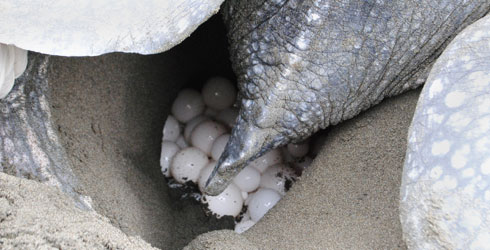
Dermochelys coriacea nest chamber with eggs.
© Katherine Garrett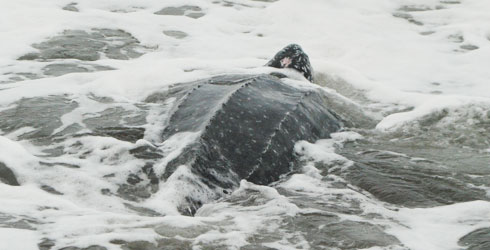
Dermochelys coriacea in the sea.
© Katherine Garrett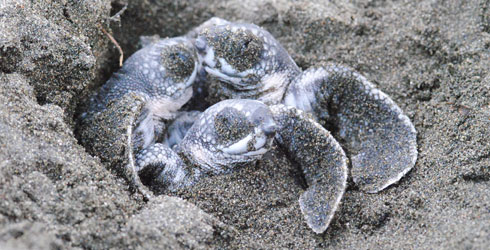
Dermochelys coriacea nest hatching.
© Katherine Garrett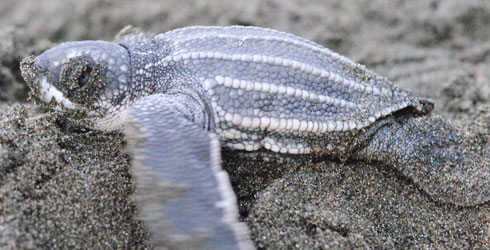
Dermochelys coriacea hatchling.
© Katherine Garrett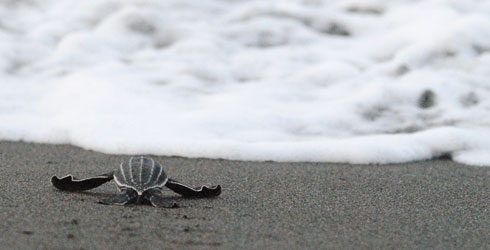
Dermochelys coriacea hatchling returning to the sea.
© Katherine GarrettAuthor
Katherine Garrett
Botanical Collectors Research Assistant
Department of Botany
A word from the author
"The largest Dermochelys coriacea specimen ever found was washed up on the coast of Wales - it was a male over 3 metres in length and it weighed 916kg."
